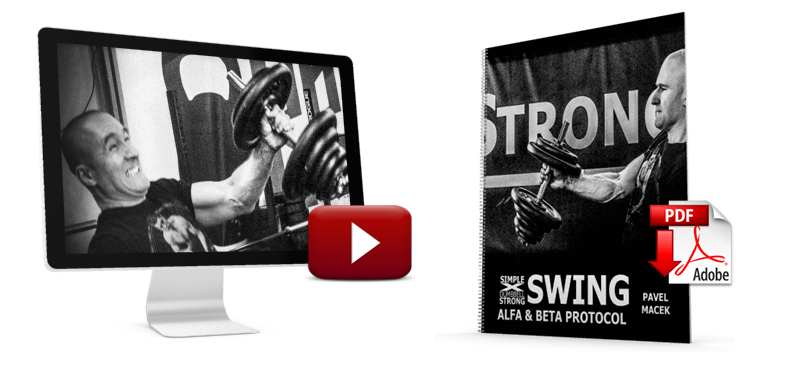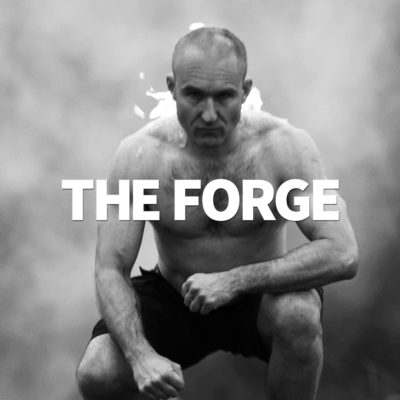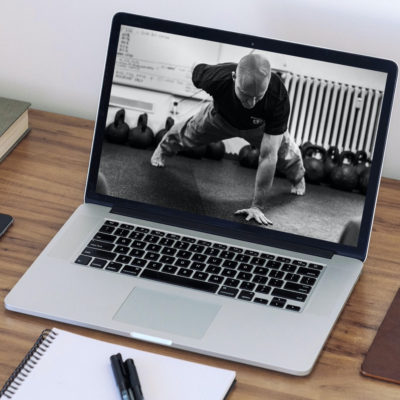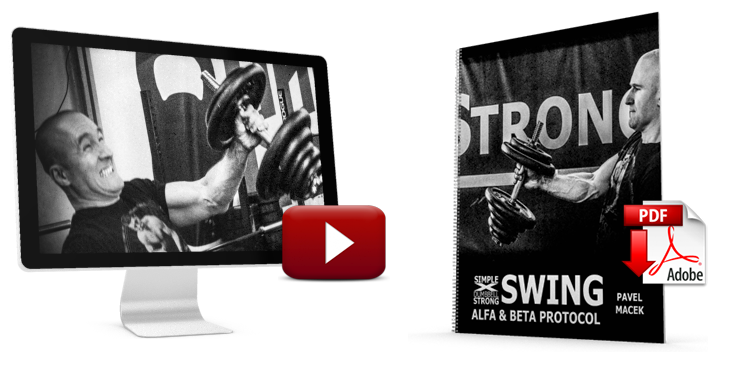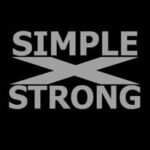Saxon with the weight on right side and hip, shifted the right arm back until it rested on the rear of his hip. He then twisted the body far to the front and then began to bend forward and to
the side. His feet were placed comfortably and pointed more or less forward with a slight turn out of both feet. Sometimes his feet were close and at other times wide spaced.
As he bent over he was careful to keep the weight balanced and the forearm perpendicular. If the arm seemed to want to slide off the back he rolled his side under it by facing his body toward the floor a little more. He usually kept his left arm on the left leg to act as guide and support. When his arm was nearly straight he locked it out by a tremendous arm push and not by going into an exaggerated twist and bend from which he could not have untangled himself.
He usually bent the right leg slightly. After the arm was straight under the weight and he had complete control of it he bent the right leg a little more then came up by the power of his side muscles and push of left arm on thigh. He did not tie himself up in knots that he couldn’t get out of.
Many of our modern bent pressers could greatly increase their bent presses by following his style. They should learn to do their twisting before they start to bend rather than twist as they bend. Some of them have learned this but they haven’t learned to keep their left hand, wrist, or arm on the left thigh at all times. Most of them still persist in waving it around in the air like a flag. The left thigh is the best place for it though some like to slide it between the legs and grasp the right. leg. With it on the left leg you have much better balance control and greater power.
Here is one thing you must do if you keep it on the thigh, or at least I find it helps me. To keep your center of balance over both legs evenly you may find it necessary to bend
the right leg a little as you make the first bend of the body then keep the leg in position until the arm is straight then bend it on down to a squat. Then hold the squat until you attain perfect balance, then come erect. If you use this method it will be easy to balance the weight and come erect. Place the left hand on left thigh as Saxon is shown doing in last issue and it will help a lot.

I have tried to follow Saxon’s style in my own pressing and teach it to all my pupils. However I find that some men are not built for this style and must use certain variations. I always found that
if I tried to keep my right leg straight while I bent I had a tendency to overbalance to the left leg. Of course if you are short bodied or allow your arm to slide between your legs you will not have this trouble and can keep the right leg straight. However you will generally find yourself rather cramped up if you keep the leg straight. You will have to lower the body farther to get the arm locked. I seldom bend the right shoulder lower than the level of the right hip. Often not that much. You may have trouble with the weight sliding off the side to the back or falling forward. If you twist the body before bending you will then be in a position to roll the body under the weight and catch the balance.
One thing I don’t recall Saxon using is a full squat. He squatted some but relied mostly on the great power of his sides and arm to come erect. We who do not possess such power must resort to the squat and personally I like it. It gives one such perfect control and power.
Learn the style that I have described and you will have a graceful, effortless press that will look like one continuous motion rather than a series of unrelated, jerky movements. I like my feet close together as it makes it easier to squat. Use plenty of front hang and you will not have so much trouble with the weight going over your head. Keep your eye on some part of the bell at all times. Adopt a method of breathing and perfect it. Don’t hurry a bent press. If you lose your balance, stop bending until you regain it.
- The Iron Man, Volume 2, Number 4, 1938
If you are interested in a Hard Style dumbbell lifting program, please check out our Dumbbell Swing Tutorial [Free Video & .pdf Manual]

